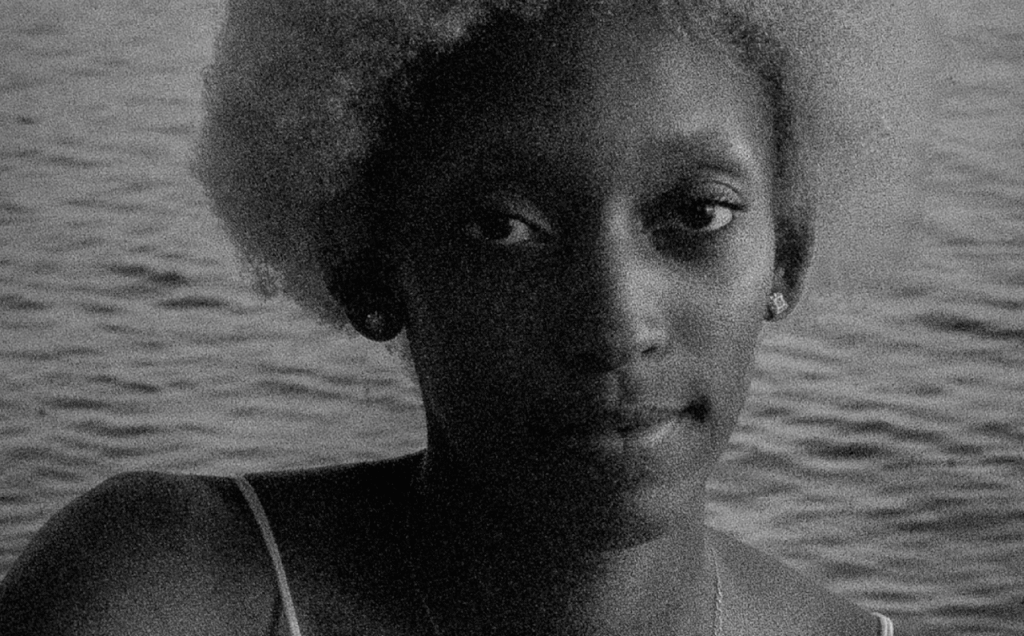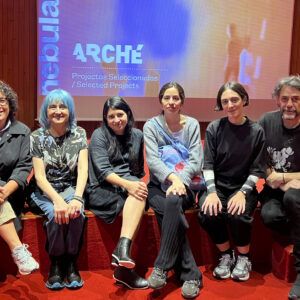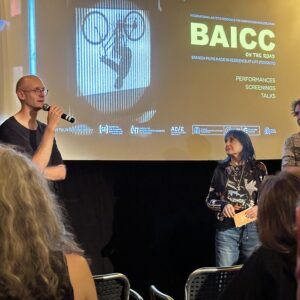We spoke with Sonya Mwambu about the powerful roots that have shaped their performance, Maono Mzimi.

What is the origin of Maono Mzimi? The performance includes some texts as well as footage from different sources. Could you tell us about this, all the pieces that form the piece?
This work started back in 2022 when I attended the Independent Imaging Retreat also known as Film Farm in Mount Forest, Ontario. I was there to learn about processing 16mm film with different plants and develop my practice as a maker. I started with no real idea, just loaded up a Bolex and shot my surroundings. However, during my time there I came across a box full of books and magazines that had a collection of writings published by, if I remember correctly, the African National Congress. There was a poem that talked about time, that lost time that I couldn’t help but connect with and include in my work in some capacity.
In February of 2023 my Kuku (grandmother) passed away and I went rummaging through her possessions. Amongst them were boxes and cabinets filled with items that tell the story of the amazing life she lived and how our family came to be. After giving birth to my father in 1967, she moved to Uganda where she spent eighteen years of her life, and I happened to come upon a collection of 35mm slides she had that show a snapshot of her early years in Kampala and Moroto. The slides show memories of the houses they lived in, independence day celebrations, the busy streets of Kampala, the river Nile with its surrounding flora and fauna, martyr memorials, churches, the Karamajong and much more. It was also during her eighteen years there she wrote many letters that included poems and songs to her mother back home in Ontario, regaling her with what was happening in the country and to our family at that time. My great-grandmother, Wilhelmena Ireland, held onto all of these letters and gifted them back to Kuku upon her return to Canada, who then used them to write a book, My Uganda. There are two poems within these writings that are incorporated into the live narration of Maono Mzimi.
The edit of this piece and how it came together was entirely a process of grief. Not only grief of the loss of my Kuku, but the grief of what could have been but what will never be within the fragments of my identity. Having been born in Uganda but growing up in Canada, everything I do is an ongoing attempt at reclaiming fragments of my identity. Every time Maono Mzimi has been performed it has taken on a new form, ever evolving with my grief, identity and my growing archive of Uganda within the diaspora and understanding of community healing.
The images, both digital and analogue, are all a part of my personal film archive from my early work in 2015, to Film Farm, and as recent as last summer at the annual Bagisu bbq held in Toronto. Mostly processed with plant materials native to Ontario and malwa aka local brew aka millet beer I got from the bbq. It is within these surreal abstractions of digital and analogue images and sounds that aspects of my Ugandan diasporic identity, culture, language, memory, love and grief become entangled in non-linear time and space.
The recorded audio features my mother’s voice, singing and speaking in a language I cannot understand, but I know that some of her words and the live narration overlap. She and my uncle helped me translate the name unbroken spaces of vision, and in my non-existent understanding of Swahili, I misspelled what they told me; thus, we have Maono Mzimi.
The performance mixes together digital images and analogue images. Could you tell us about your relationship to analogue cinema?
My relationship with analogue started in the first year of my film production studies in Toronto in 2015. We learned how to use the Bolex camera, and within my research, I learned about Kodak’s mid-century skin-tone “Shirley cards,” that were initially optimized for white skin through the 1970s. I made a film with the same name in my third year of study that gestured to the racial bias behind these Shirley cards and explored the deeply textured layers of Black artistry, history and the racial politics of popular culture. I aimed to critique the pervasive racial bias in commercial photography, marketing and pop culture, bolstered by a material scarcity of tools and techniques to reflect racial diversity in 20th-century photography and the standards to which our society calibrates the very tools we use to create images.
Your presence is also something that is present in the piece, is there any idea behind this?
For me, being able to recite Kuku’s words each time this piece is performed allows me to keep her spirit and memory alive in a way that is healing to me in a way I am still finding the words for. It is within the last lines, and then I turn to join the world my soul refreshed my work to do, that become a mantra to continue my work despite, or rather within my grief, of preserving the history, culture and heritage of the Ugandan community within the diaspora and at home, and build towards a better future for all those that may come after us.





